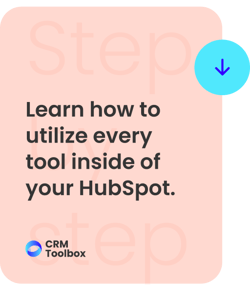Subscribe to ur Blog

One of the most intimidating processes that a growing company (or one that wants a change) must go through is migrating from a CRM without losing any data stored. Not only is this an influential change for the operations of your company, but you are also organizing one of the most important resources you have, your clients’ information.
A good migration should not be a headache. It should be a well-thought-out decision with beneficial results in the long run. To make the migration as smooth as possible, we’ve come up with these tips:
What is a CRM Migration?
Defining a CRM migration is crucial because changing software is not the same as migrating. Changing software is replacing your existing CRM with one that better suits the needs of your company. It could be cheaper, more scalable, or more powerful. A CRM migration refers to a change of platform and transferring all your clients' information and data. A new CRM, no matter how powerful, will not be of any use without the input of data and information. That's why data is at the heart of a CRM migration.
If it's time to switch CRMs, you need to migrate. Based on our experience with CRM migration for different clients, I have decided to create a list of tips that will help you in the process.
1. Choose Well
It seems a bit obvious, but CRM migration is not always about the practicality of the new option but the difficulty of using the current software. This leads many companies to switch CRMs without researching how the new software will benefit them. Make sure that the new CRM adapts to the needs of your company today and as you grow, that it is simple to use, and that it connects with other apps the company is using.
2. Prepare for Change
One of the main problems in migrations comes from human resources sometimes not all of the team will be open to the change. Those who have worked with the previous CRM for years may be less receptive to change. This is why prior training and explaining the improvements brought by the new software can be crucial for adoption. The best CRM will be useless if your team does not give it a chance.
3. Organize
In the same way that moving helps get rid of objects that no longer have use or value, a CRM migration is an ideal time to organize your customer base by finding which prospects are worth the effort. For example, if your sales cycles are six months long and you have clients with more than two years without a close, you can get rid of them or keep them in a backup CSV file. It is also a great time to remove duplicate records, add data, correct input errors, and analyze each field that you use today.
4. Data Mapping
Your CRM may have rules to qualify prospects and contacts, splitting them into different groups. Taking all of these groups into account means you won't lose any information when migrating. It's also a great time to take note of the various items and processes you use to remove those that hold no valuable information.
5. Create New Fields
Once you have your data mapped, you will notice that not all the fields from your current CRM are in the new software. To combat this, it’s best to create the missing ones and define the type of objects in question, whether they are a drop-down, boxes to fill, or lines of text.
6. Create a Backup
As perfect as your migration plan could be, any data lost can not be recovered. Partners and applications that aid in migrations promise no data loss, but it’s always better to have a backup. Even if the technology fails, you will have everything you need to try again. It’s not only the data of your clients and companies but also the documents, attachments, templates, reports, and automation that must be backed up.
7. Identify Areas of Opportunity
Migration can be the pivotal moment that finds solutions to problems that have burdened your team for a long time. Think of it as a new beginning where you will be launching a new tool and challenging yourself and your team to find areas of opportunity/improvement. If you are migrating from a CRM, it is a great time to question whether your way of working with the previous software was optimal or if there are still new features that will improve your team’s dynamic.
8. Have a Project Leader
Whether you're working with a Hubspot solutions partner or working in-house, someone in the organization should be assigned to the project. This person will be responsible for ensuring that all the points mentioned above are met and will be the one who coordinates with others to obtain the cleanest possible migration. In addition, this person should also lead the implementation process and ensure that the new tool is used well.
9. Test, Test, Test
Before you start the final migration, you should run some tests to make sure that the data is migrating as it should, that the custom fields are working correctly, and that there aren't any errors in the integration. This will encourage clarity and make the project run smoothly.
10. Define a Cut-Off Date
Although it seems obvious, having a well-scheduled date for when the new CRM will be used keeps everyone on the same page and prevents updates from being missed. The previous CRM should be kept as a backup or consultation tool during the first few months, but your team needs to know when the new CRM replaces the old one for anything good to happen.
11. Avoid Last Minute Changes
Once everything is mapped, the cut-off date is ready, and everything is in place to make the migration go live, you should avoid last-minute adjustments that will throw off the entire process. If the change is critical, the migration should be postponed until it's implemented. If it is something simple, such as changing the name of a field, finishing the migration, and then making the change will decrease the risk of any mishaps.
12. Migrate and Check
Now that the migration is complete, checking that the data loaded correctly and that all the fields work as expected is key. You can do a manual check with your contacts to ensure that there are no duplicates and that everything is integrated well.
13. Have a Support Team
Whether you have decided to integrate on your own or with a partner, having post-integration support leads to better implementation since the partner will guide you in using the platform, provide you with good practices, and get you the most out of your investment. Look for a company specialized in the new software and get advice from them during this crucial stage.
Now that you’ve finished this blog, you know more about how to handle a CRM migration in the best possible way. Each migration needs to meet the unique needs of your company. If you still have doubts about your migration, I will be happy to help you. Schedule a call with me, and we can talk about your needs.
Related Reads
Master HubSpot tools & unleash a world of endless possibilities!
Unlock Your HubSpot Powerhouse: Contact Us to Transform Your Digital Journey!

Izzy
My name is Izzy and I am a co-founder of CRM Toolbox, an award-winning HubSpot Solutions Partner. I lead our team of consultants who provide professional guidance to help businesses implement the HubSpot CRM platform migrate, integrate their tech stack to HubSpot to create a seamless environment for sales reps to use. There is nothing I love more than solving the challenges that come up when someone wants to migrate an old system or integrate their tech stack with HubSpot - it's like a puzzle!
Subscribe to our blog
The best information about inbound marketing, sales, guides and migrations.



